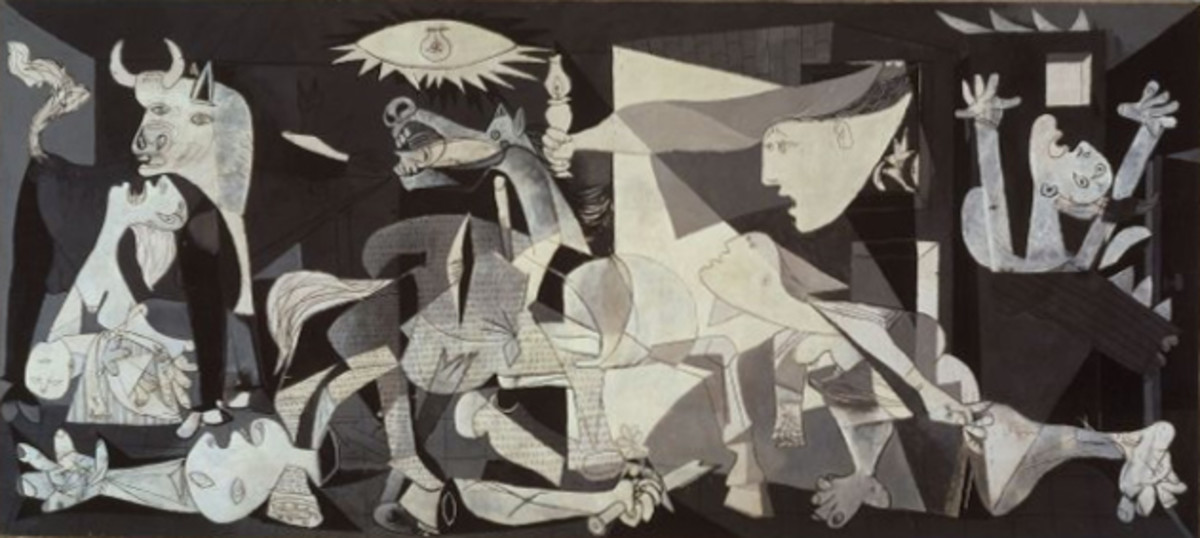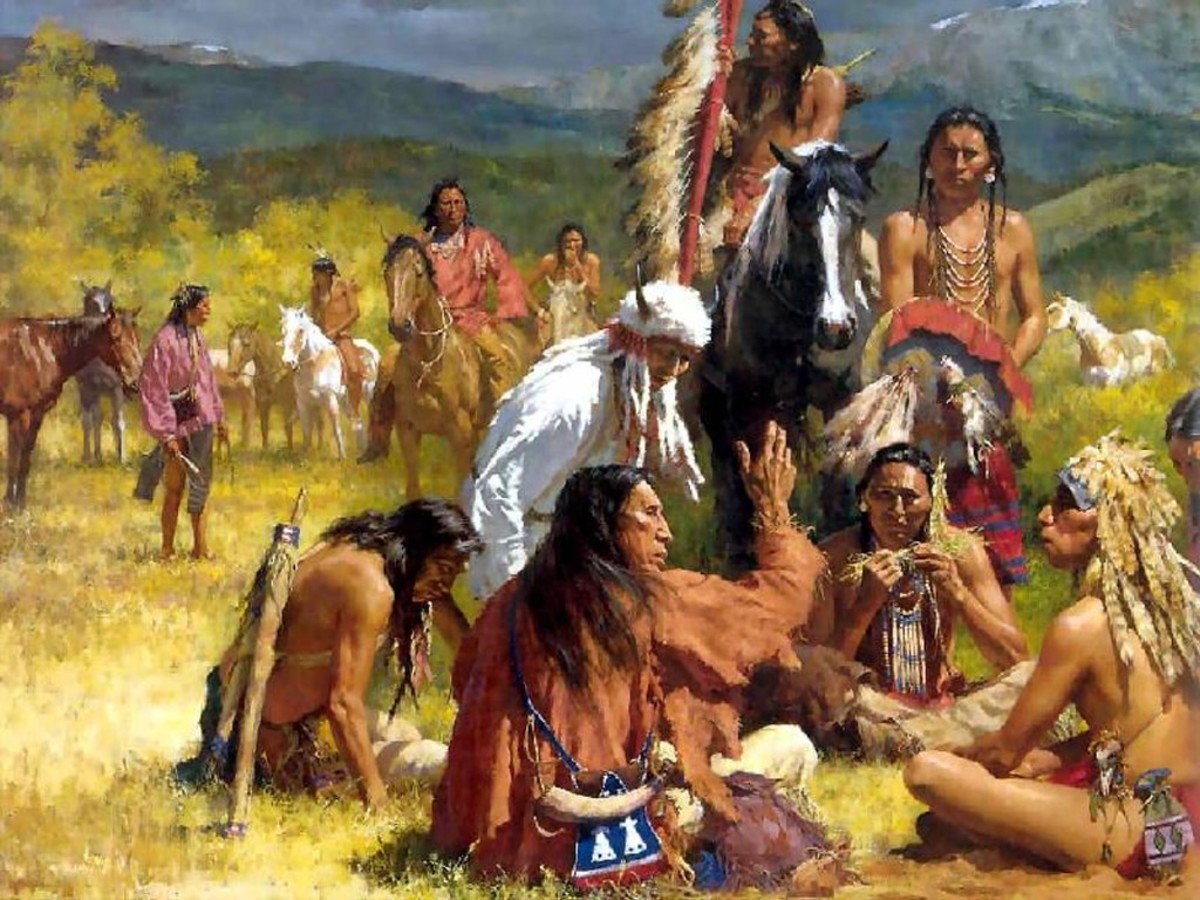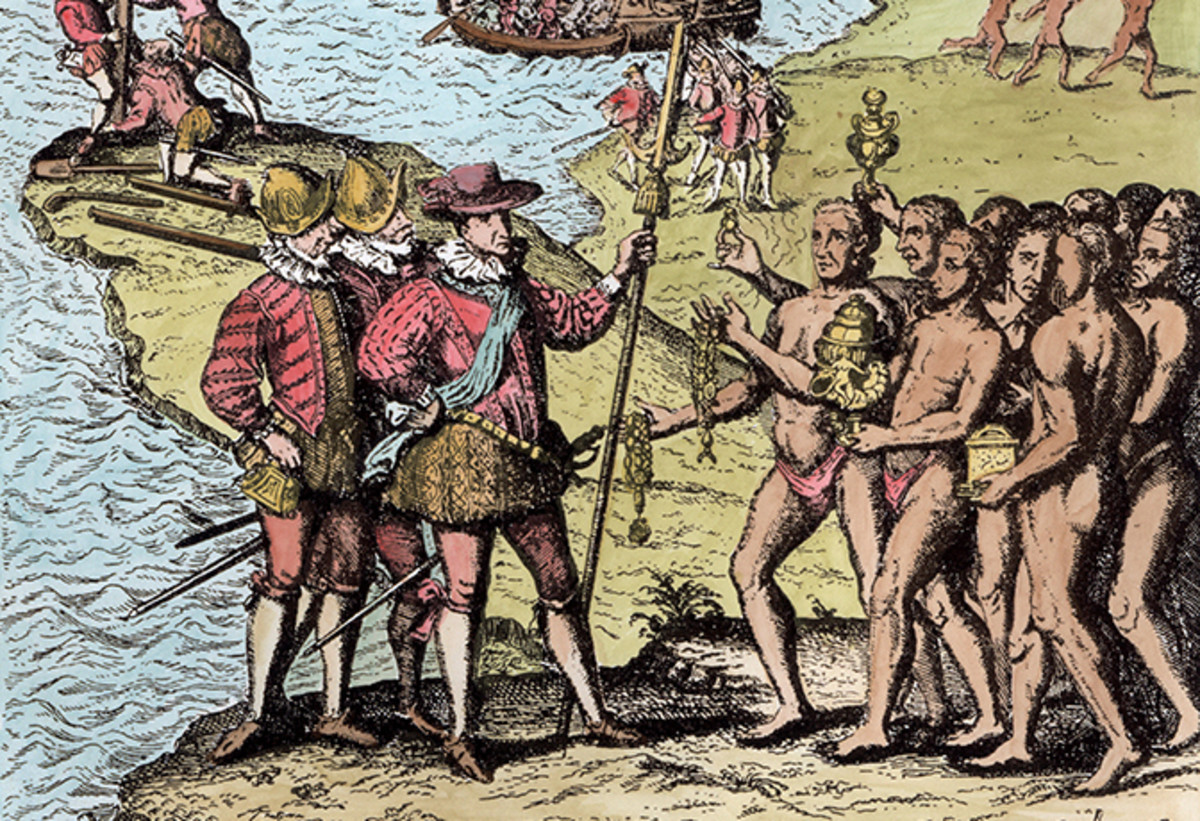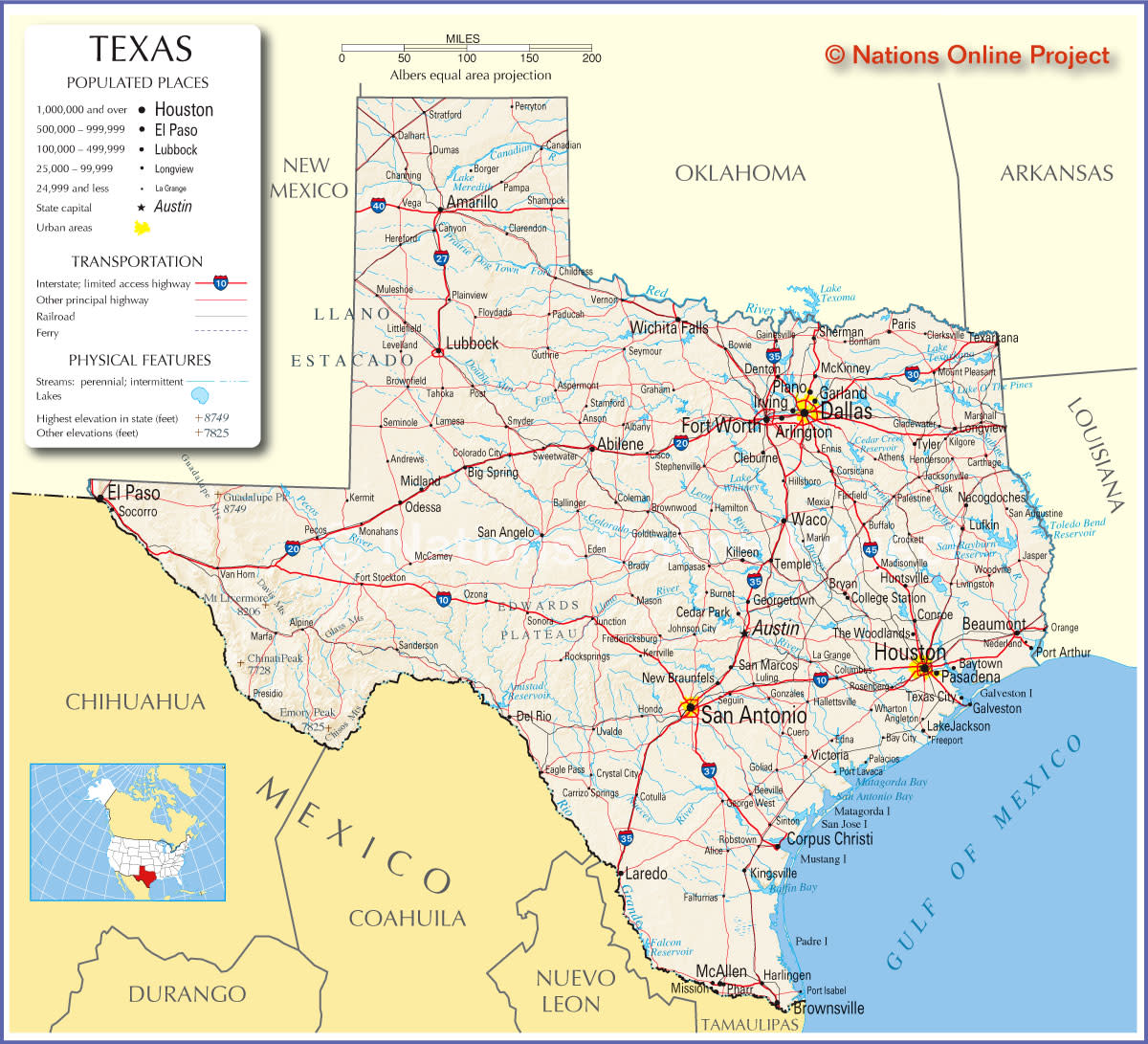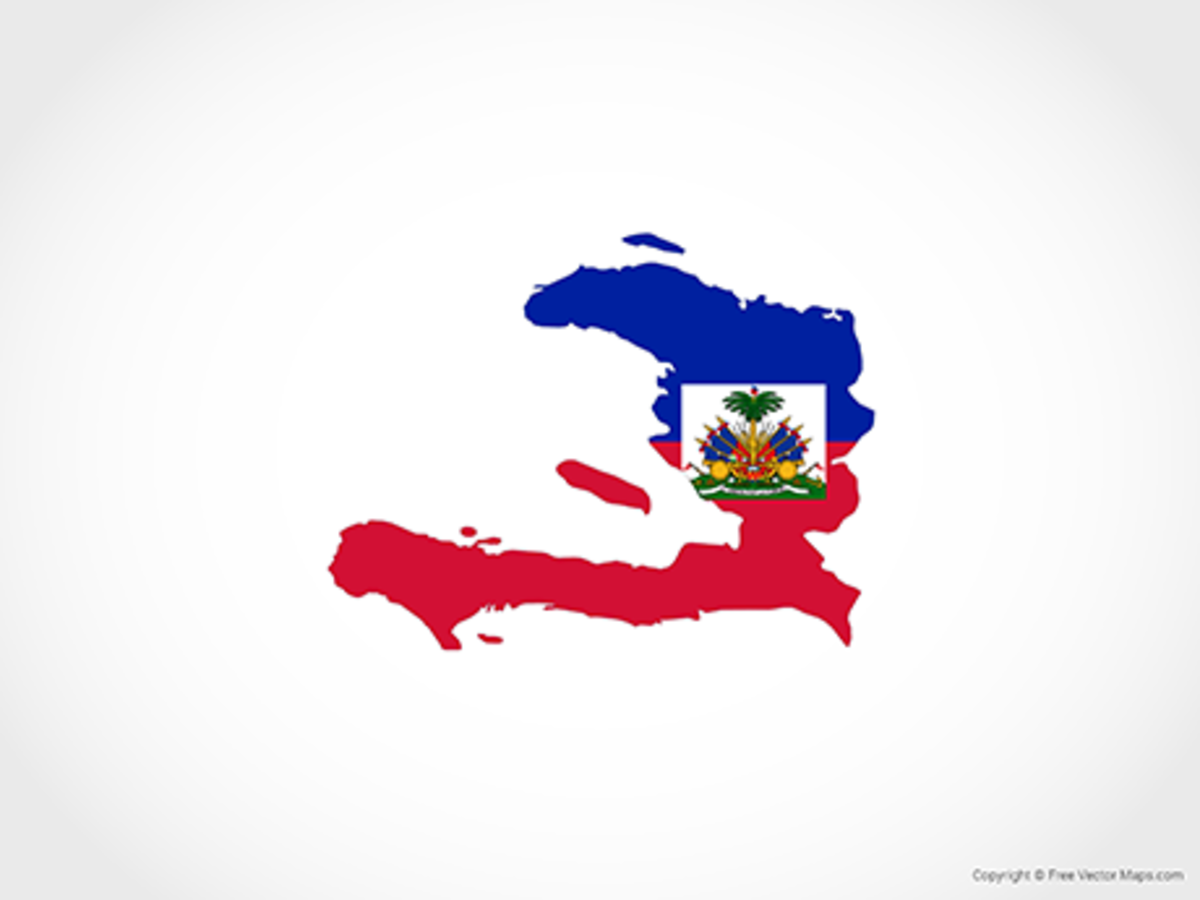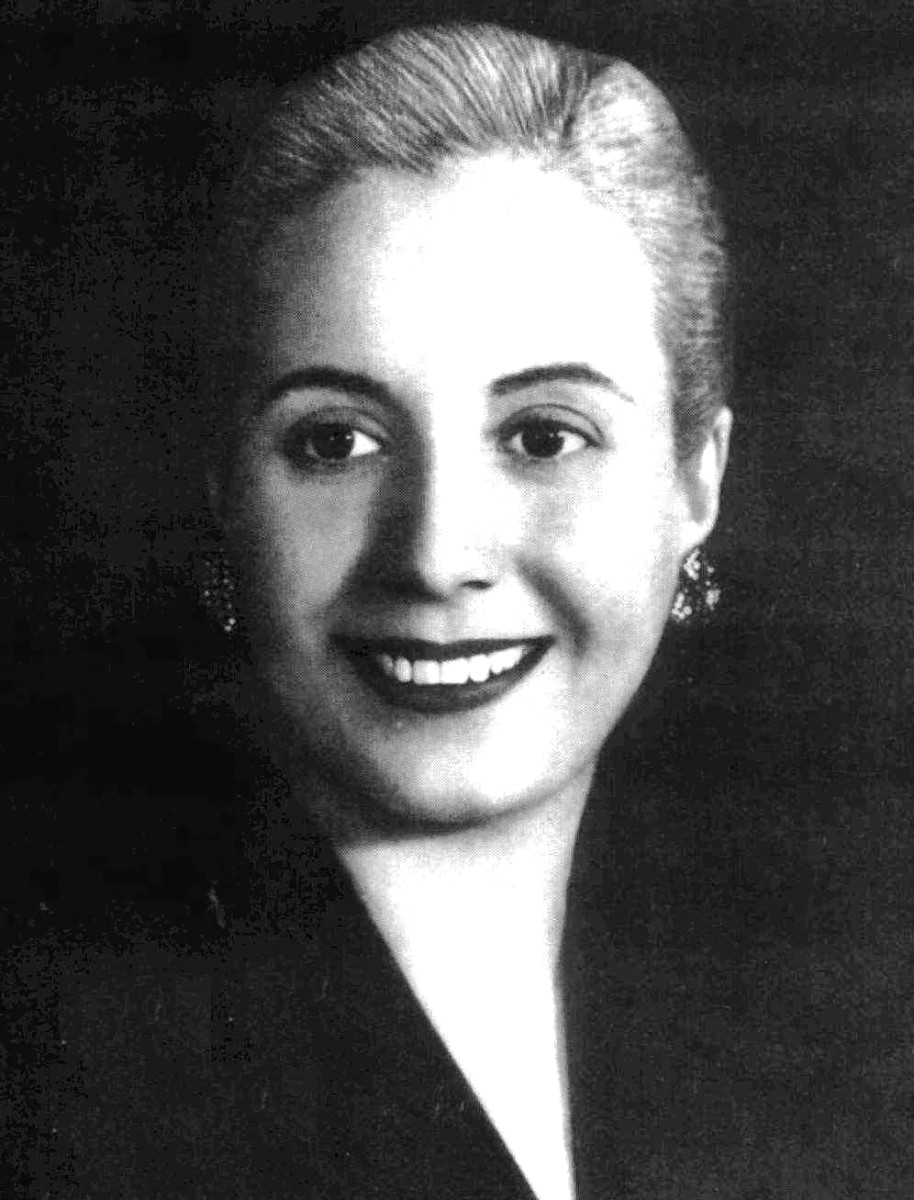- HubPages»
- Education and Science»
- History & Archaeology»
- History of the Americas
Connecting art and material objects to the history of Latin America
Latin America contained tribes of people that were non-sedentary, semi-sedentary, and sedentary. There are small sculptures and pots from clay that remain from these tribes from around 500 B.C. The non-sedentary tribes carried only the basic essentials and constantly hunted for food. Their time was filled with creating tools such as knives and arrows for hunting and creating simple shelters. The semi-sedentary tribes moved around like the non-sedentary tribes but returned seasonally to farms that they established when the farm bore fruit for them. To farm, these tribes had to spend time on making farming tools. Farming gave the tribe more food than they needed and in return, they could store the food and save it for later. With the extra food, instead of hunting the tribe can use the time to create better tools and bigger farms. The sedentary tribes remained in one place where they farmed the land more than the semi-sedentary tribes. These tribes could predict when their farms would produce food and created farms to provide foods during different seasons. Like the semi-sedentary tribe, the sedentary tribe also had time to themselves (much more time), that they learned how to store more and more food and make more dishes. These techniques gave the natives more time to build houses, make specialty items, such as jewelry, pots for water or food, and to develop pottery to be used in rituals for birth and death.
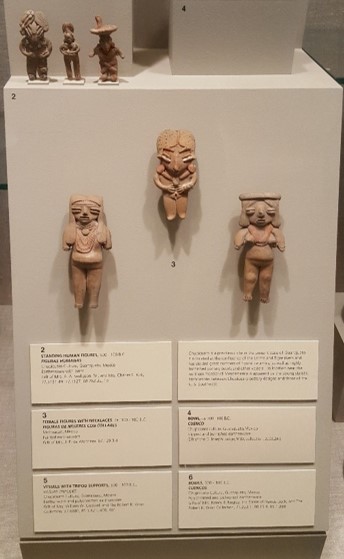
The first image in the appendix is about three women carved in clay who are wearing necklaces. Each woman is wearing a different type of necklace and a different number of necklaces. The woman on the left is wearing two necklaces, one that has a circular pendant and another below it that is large and may have been made with a lighter material and layered to fan out and cover a large part of her body. The woman in the middle has a necklace with three pendants, there are two on her shoulders that are larger than the one on her chest. The pendants on her shoulders are made with red clay and darker than the pendant on her chest. The woman on the right has one necklace that from the clay it may have been made out of woven yarn that was dyed a dark color. These figures are from 500 – 100 B.C. indicating that there were semi-sedentary and sedentary tribes around at that time. Where the person that made these figures from clay had time to make them because he or she had access to food on a regular basis and did not have to worry about hunting or gathering food. The women that these figures were modeled after are wearing necklaces that most likely contained metal, polished stones, worked the clay, and dyed fibers that were created by an artisan in their tribe. It is most likely that these figures came from a sedentary tribe due to the metal, stone, and/or clay working to find in the necklaces. Metalworking requires a long process and only sedentary tribes, have enough time to develop this process and run the metal through it. Clay and stone require a similar amount of time and dedication to each material to make a necklace, especially since this is jewelry which should not be too heavy. With time and plenty of food, people could focus on a particular trade and eventually they constructed large empires, such as the Incan Empire.
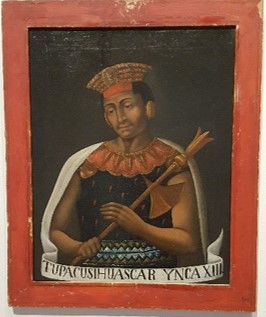
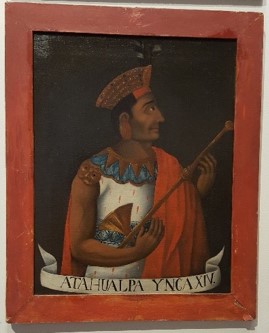
The Incan Empire was established around 1438 and lasted until 1533 when Atahualpa the Inca’s last king was defeated by the Spanish. The second image in the appendix contains two portraits of Incan kings, one is Huascar (the 13th king), Atahualpa’s brother and Atahualpa (the 14th king). These portraits were painted by Cuzco natives for King Philip II of Spain in 1570. It is important to notice that these portraits are simple, they both have a black background, emphasizing the king in the painting. Where in native artwork the king is one of the only people of the tribe that matters. There is no chair, table, or buildings in the background because natives do not associate those symbols with power as Europeans do. The one aspect that does matter is what the king wears. Huascar and Atahualpa’s clothing were intricately painted as a single color with specks of orange and a waistband with golden and blue cloth. Indicating that compared to the king the clothing worn by his people is more simple, and probably not dyed with dark rich colors, or almost completely white.
Huascar’s dark clothing contrasts with Atahualpa’s white clothing. Huascar and Atahualpa, ruled over the south and north of the Incan Empire at the same time after their father died. The brothers fought each other for complete control of the whole empire at a time when Spain was traveling to find developed civilizations in South America. The war weakened and left Atahualpa unprepared to fight the Spanish. When Atahualpa met the Spanish he angered them by throwing down the bible that they offered to him causing a fight that Atahualpa lost. The head of the Spanish group, Francisco Pizarro captured Atahualpa and held him for ransom, converted him to Christianity, and had him killed. During this process Atahualpa had Huascar killed. In these portraits Huascar and Atahualpa are both holding axes, Atahualpa holds his upside down as a symbol of his defeat by the Spanish. Atahualpa’s cape is off his right shoulder showing his right arm, possibly indicating that he was a strong military leader, yet he looks off into the distance of the upper right corner of the painting. It is as though the painter felt that Atahualpa was not a very intelligent leader or that he was a misguided leader which lead to his surrender to the Spanish. These paintings were commissioned by King Philip II of Spain so that people would be able to see what the kings looked like and preserve the Incan Empire leadership as history. To contrast a quick search of King Philip yields paintings where he is dressed more ornately, with puffy striped clothes, than Huascar or Atahualpa and can sometimes be seen with a background and chair or table.
It is important to note that the natives of Cuzco paint similar to a European style. The Incan Kings are painted with multiple colors, while a smaller number of colors would be on European paintings. The Kings and their clothes are shaded to indicate depth and give the image a more 3-D perception. Art could be found in the codices that the natives used to record dates and events of the past, present, and future. The codices also contained stories of the kings of the Incan, Mayan, and Aztec Empire from when they were born and predicted if the king would be a military leader or an intelligent leader. The third image in the appendix is the Dresden codex from the Mayan Empire. Unlike the portraits painted by the natives of Cuzco in the 1800s, the facsimile of the Dresden codex that was produced between 400 and 500 years ago, contains 2-D line drawings. Animals appear often in codices and are associated with kings. In the far right panel in the image of the facsimile of the Dresden codex, there is a red shaded-in section that has a lamb in it. The lamb is crouched below a person who is receiving masked people. The lamb may be a symbol of sacrifice, that the person above the lamb would be a sacrifice to the gods. This codex contains rituals, astronomy, and the Maya calendar system. Gods and people in this codex were drawn with ornate clothes and have a large head to indicate their importance. Any time a person or god is drawn they do not necessarily have a pedestal or solid ground to stand on, like one would have in European artwork and are seen floating in the space they are drawn in.
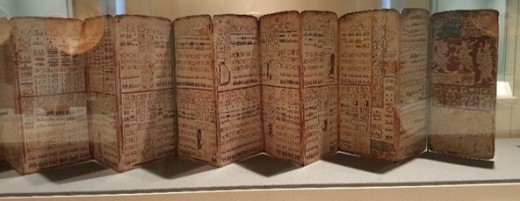
Codices are a good example of what artwork from the natives looked like before Europeans discovered their civilizations and introduced their art styles to them. The portraits of Huascar and Atahualpa are extremely different from the drawing in the codex, but they are not entirely European. It is of importance that the Spanish chose the use the natives to paint out their history, instead of having a Spanish artist paint it. There is history in the way the natives paint. From the materials that they use and the style of the paintings. These aspects indicate the surroundings of the natives and how the natives saw the world around them.
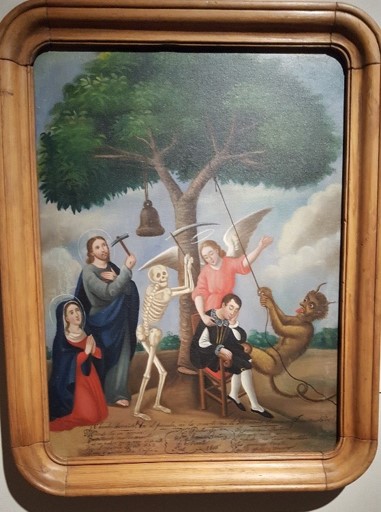
The final painting is the Tree of Life painted by Sister Juana Beatriz in Mexico, where pictured is a man sitting under a tree where, to his left is the devil pulling on the tree, behind him is an angel, and to the right is a skull holding a sheath, Jesus, and the virgin Mary. The scenery is fairly simple the tree fills out the top of the painting and Mary, Jesus, Death, the angel, and Devil fill out the rest of the painting. This painting has more details than the portraits of the Incan Kings. The man sitting on the chair is dressed like a European. In contrast, Jesus, Mary, and the angel is dressed much more simply and have halos on their head indicating that they are related to God. The halos are similar to the diadem, crown, that was painted onto Huascar and Atahualpa’s head to indicate that they were royalty. At the same time, the kings of the natives were akin to the gods and were not allowed to be looked upon except by their family. This gave the Incan Kings power and their people followed their orders to avoid the wrath of a god. Jesus and Mary because of their relation to God are given power and thus are prayed to watch over people on earth and in heaven.
It is interesting that the Tree of Life is a painting about decisions. That you can choose the Devil or God when you make decisions in your life if you are Christian. The painting of Atahualpa is a portrait that represents the outcomes of his decisions in his life and he is painted in a slightly darker shade than Huascar, holding the ax upside down and looking off in the distance. The codices also record the decisions and the outcomes of those decisions made by the kings of the various empires in Latin America. These pieces of art are pieces of history that can be used as reminders to know when the next harvest of a certain crop will come or to know what kind of qualities is good to have in a leader. These codices were duplicated by the Spanish and used to record the history of the natives, in the native drawing style and Spanish, so that they could be sent back to Spain to be used as information for the king of Spain to understand the situation in Latin America.
The church participated in the exploration of Latin America. In Mexico the catholic church is prominent and Christian religions focus on guiding you towards God. Sister Juana’s painting could be used to guide you to God, to remember not to choose the Devil when you have God. Similarly, during the Incan Empire natives would conduct rituals to honor the gods hoping for a good harvest or a healthy baby. Akin to Mary and Jesus, Huascar and Atahualpa would be closer to other gods. It would benefit the Incans to please the king, so he can relay their prayers and wishes to the other gods. Mary, Jesus, and the angel are all painted nicely in beautiful colors, where the Devil is painted very grisly like. Huascar and Atahualpa are also painted similarly. They have the indications that they are kings and this shows the respect that the artist has for them because as they are close to gods it would be dangerous for the artist to risk angering the gods to depict past Incan kings as common or to do anything that would embarrass them.
These five art pieces have a lot of history stored in them. The person painted or drawn is usually an important historical figure, but also the materials used can reveal the date of when the art was created and also help understand what the community had to use as an art material. The paintings changed with the European influence and that is indicative of the lifestyles of the natives changing after coming under Spanish rule. These pieces tell stories of people who first lived simply and then became more sophisticated as time went on. Without any of the art, there would be no history to learn about and limited knowledge of the natives to talk about.
This content is accurate and true to the best of the author’s knowledge and is not meant to substitute for formal and individualized advice from a qualified professional.
© 2019 Genus Mus

